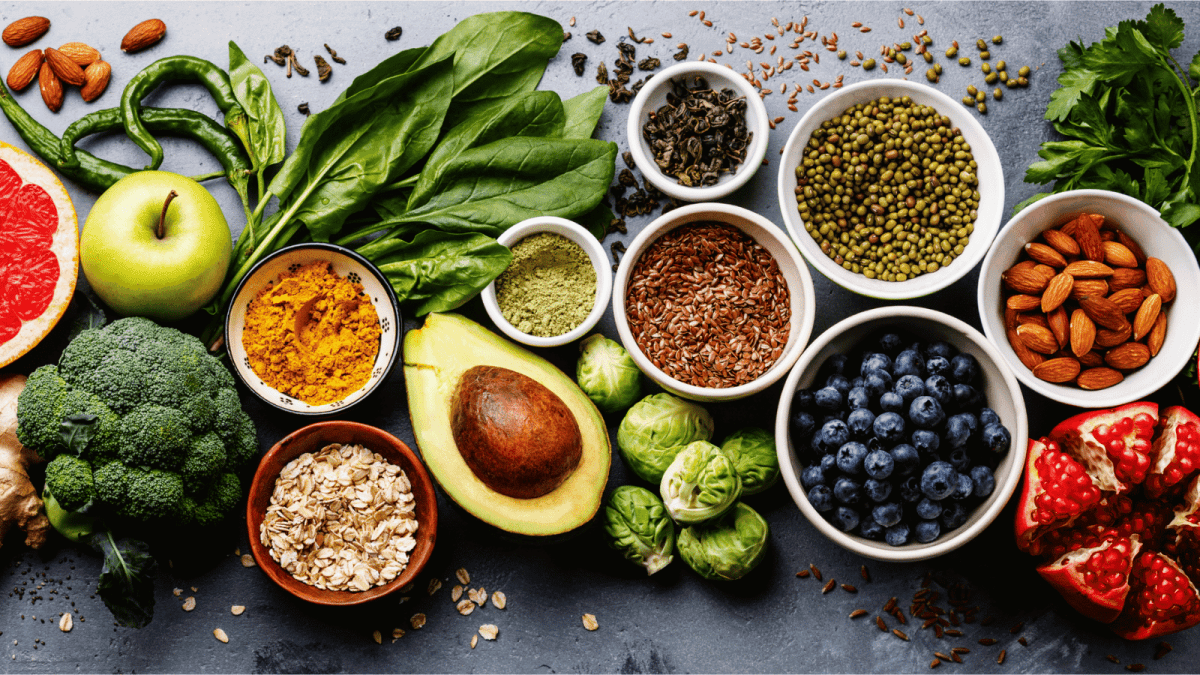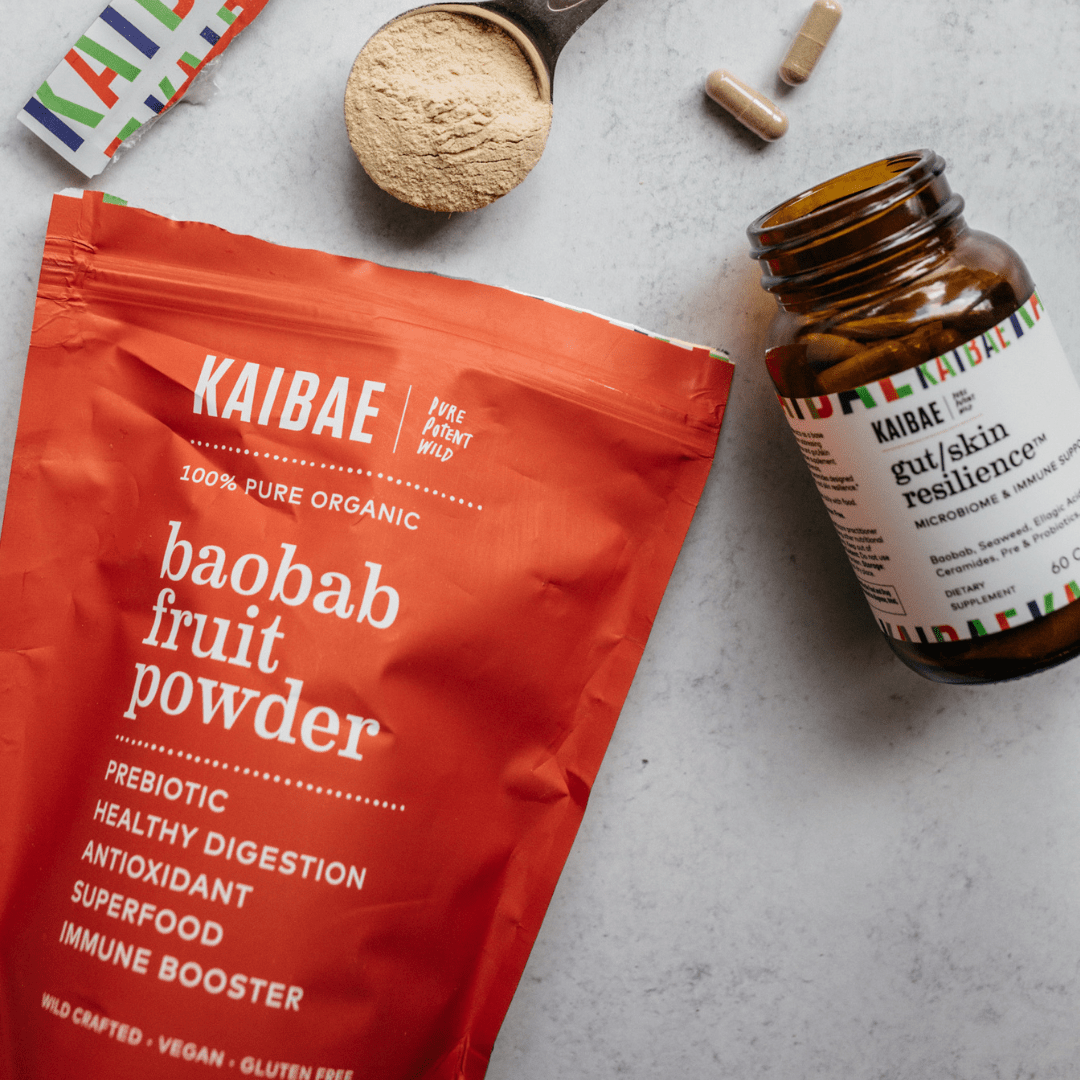Polyphenols: A Game-Changer for Boosting Metabolism and Weight Loss

Polyphenols are plant compounds that have significant potential to enhance metabolic health and aid in weight management. These compounds are rich in fruits and vegetables and provide a promising natural approach to tackling metabolic issues like diabetes, cardiovascular disease, and obesity.[1]
Understanding Polyphenols: Nature's Metabolic Modulators
Natural substances such as polyphenols play a crucial role in the defense mechanisms of plants. Wild plants are particularly abundant in polyphenols because their heightened exposure to UV radiation, drought, nutrient deficiencies, and pathogens triggers the production of these compounds as a protective strategy.
These beneficial plant properties provide us with significant health advantages. Polyphenols are a diverse group of compounds that include flavonoids, phenolic acids, stilbenes, and lignans.
Polyphenols influence digestion & absorption
- Polyphenols block enzymes such as amylase and lipase, lowering the absorption of both carbohydrates and fats. Blocking amylase and lipase benefits weight management, blood sugar control, and metabolic Health.[2]
- Polyphenols act as prebiotics, promoting the growth of beneficial gut bacteria like Bifidobacteria and Lactobacillus. These bacteria ferment polyphenols, producing metabolites such as short-chain fatty acids (SCFAs) like butyrate, acetate, and propionate that improve gut health and reduce gut inflammation.[3]
- The gut microbiome plays a crucial role in transforming these molecules into bioactive metabolites with many health benefits. For example, the gut converts Ellagic Acid found in pomegranate to urolithin-A, a metabolite that helps to improve muscle health.[4]
- Baobab leaf polyphenols help alleviate gastritis, an inflammation of the stomach lining. Polyphenols also inhibit H.pylorii, a bacteria associated with stomach ulcers, which is more prevalent in obese people.[5 ]
Polyphenols enhance Insulin Sensitivity
- Insulin resistance occurs when cells become less responsive to insulin, leading to impaired glucose uptake and elevated blood sugar levels. Insulin resistance is a key component of metabolic syndrome and includes hypertension, abnormal cholesterol levels, and increased abdominal fat.
- This also has significant implications for muscle and bone metabolism.
- Reduced insulin sensitivity disrupts protein synthesis and metabolism, potentially causing muscle wasting and decreased muscle strength.
- Chronically elevated insulin levels can impair muscle protein anabolism, leading to sarcopenia – the progressive loss of muscle mass and function.[6]
- Insulin resistance alters bone metabolism, increases inflammation, and impairs calcium regulation, decreasing bone formation, reducing bone mineral density, and increasing fracture risk. These changes contribute to a higher prevalence of osteoporosis and increased fracture susceptibility in individuals with metabolic syndrome.
- Studies show that polyphenols can improve insulin sensitivity and regulate blood sugar levels, reducing the risk of metabolic syndrome. Researchers investigating the effect of EGCG in mice showed an improvement in insulin sensitivity, a polyphenol found in Green tea and Baobab leaf. [7]
EGCG a polyphenol found in Baobab Leaf and Green Tea and improves Insulin Sensitivity reducing the risk of Metabolic Syndrome
Metabolic Rate Optimization
Certain polyphenols stimulate metabolism, potentially supporting more efficient calorie burning and helping to maintain a healthy weight. These 7 plant-based compounds activate thermogenesis, a process where the body generates heat and burns calories:
- Catechins in Green tea and Baobab leaf stimulate brown adipose tissue, increasing energy expenditure and fat oxidation. [8]
- Capsaicin in chili peppers increases metabolic rate through heat production. [9]
- Curcumin from turmeric activates brown adipose tissue metabolism.[10]
- Resveratrol found in grape skins stimulates energy expenditure. [11]
- Quercetin found in apples, baobab, and berries, enhances mitochondrial function.[12]
- Anthocyanins in blueberries, blackberries, and dark-colored fruits also support metabolic efficiency.[13]
- Cinnamon's polyphenols improve insulin sensitivity and boost thermogenesis. These compounds increase metabolic rate and have antioxidant and anti-inflammatory benefits.[14]
Polyphenols burn calories and boost your metabolism

Lipid Metabolism Regulation
Enhancing Lipolysis: Polyphenols can stimulate the breakdown of stored fats (lipolysis) by activating enzymes such as hormone-sensitive lipase (HSL). Catechins found in green tea and baobab leaf increase lipolysis by activating β-adrenergic receptors.
Inhibiting Lipogenesis: Polyphenols may reduce the formation of new fat cells (adipogenesis) by downregulating genes and enzymes like fatty acid synthase (FAS) in fat storage.
Polyphenols promote fat breakdown and reduce fat storage
Polyphenols for Appetite Control
Polyphenols increase the production of short-chain fatty acids that stimulate the release of satiety hormones such as GLP-1 (Glucagon-like peptide-1) and PYY (Peptide YY), Letin, and Ghrelin.[15]
Research suggests polyphenols can enhance GLP-1 release by activating specific cellular signaling pathways, particularly in enteroendocrine L-cells. Increased GLP-1 production has positive implications for metabolic health, potentially improving insulin sensitivity, reducing appetite, and supporting glucose homeostasis. [16]
Specific polyphenols like those found in grapeseed, green tea, baobab, berries, and dark chocolate appear effective in promoting GLP-1 secretion, offering promising avenues for dietary interventions in metabolic disorders.[17]
Polyphenol Magic: The Top 10 Super Powers of Polyphenols
Polyphenols stimulate GLP-1 gut hormone for satiety and blood sugar balance
Top Polyphenol-Rich Foods for Metabolic Support
Baobab Fruit Powder
- Prebiotic super fiber
-
a low glycemic food that helps with appetite control
Green Tea (Epigallocatechin Gallate - EGCG)
- Powerful antioxidant
- Enhances metabolic rate
- Supports fat oxidation
Berries (Anthocyanins)
- High in flavonoids
- Improves insulin sensitivity
- Reduces inflammation
Dark Chocolate (Cocoa Flavanols)
- Supports cardiovascular function
- Potential insulin regulation
- Mood and cognitive benefits
Curcumin (Turmeric)
- Potent anti-inflammatory properties
- Metabolic syndrome management
- Potential weight loss support
15 Amazing Benefits of Baobab Powder You'll Love
Take Away
Plant polyphenols represent a promising frontier in metabolic health and weight management. Boost your polyphenol intake by consuming colorful fruits and vegetables like berries, leafy greens, and citrus fruit. Include foods such as dark chocolate, green tea, and baobab powder. Add spices like turmeric and cinnamon and herbs like oregano and thyme. Get creative and boost your recipes with polyphenol-rich ingredients.
References:
- https://pubmed.ncbi.nlm.nih.gov/30298133
- https://pmc.ncbi.nlm.nih.gov/articles/PMC10531333
- https://pubmed.ncbi.nlm.nih.gov/31640295
- https://pubmed.ncbi.nlm.nih.gov/35506342
- https://scialert.net/abstract/?doi=jbs.2008.225.228
- https://pmc.ncbi.nlm.nih.gov/articles/PMC7013734
- https://pubmed.ncbi.nlm.nih.gov/35168078
- https://www.sciencedrect.com/science/article/pii/S000291652204833X
- https://pmc.ncbi.nlm.nih.gov/articles/PMC5426284
- https://pubmed.ncbi.nlm.nih.gov/23339049
- https://pmc.ncbi.nlm.nih.gov/articles/PMC8122246
- https://pubmed.ncbi.nlm.nih.gov/26277481
- https://www.sciencedirect.com/science/article/pii/S0924224423002558
- https://pmc.ncbi.nlm.nih.gov/articles/PMC3924990
- https://ifst.onlinelibrary.wiley.com/doi/10.1111/ijfs.14247
- https://pubmed.ncbi.nlm.nih.gov/25088664
- https://ifst.onlinelibrary.wiley.com/doi/10.1111/ijfs.14247


















